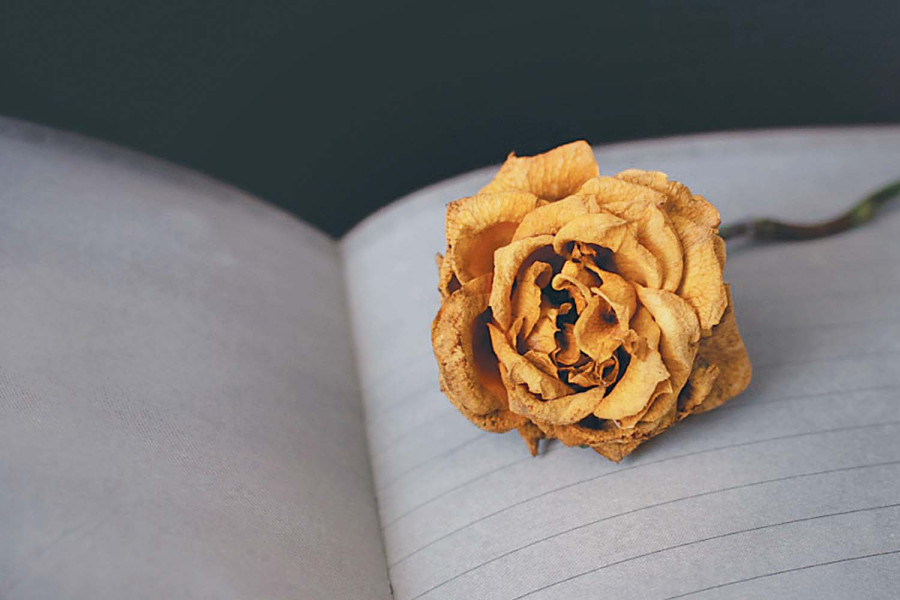Columns
Enriching our obits
Proper obituaries are essential for instilling professionalism in the genre.
Dharma Adhikari
Whenever a media figure passes away, I find myself instinctively checking the news coverage to observe how the media handles the death of one of its own. This interest is heightened by the fact that ideally, journalists, while alive, would typically adhere to journalistic ethics that emphasise staying out of the story and avoiding personal attention.
Yet, in death, they often, but not always, become the story, and their legacies are celebrated, narrated, examined, or dissected by their peers and colleagues.
My own indelible memory of a rare case that went unreported was the death of prominent media scholar Grishma Bahadur Devkota in 1995. Irony prevailed, as despite his scholarly contributions to the media, his passing went unnoticed by the media for weeks. His family chose to quietly cremate him, away from the attention of newspapers, the predominant purveyors of news during those days. News values often dictate journalists to overlook noteworthy figures beyond politicians, celebrities, or big shots in business.
Upon the passing of veteran journalist Gokul Prasad Pokharel on January 1 this year, and perhaps as a media critic, I wanted to know how the media would reconcile their selective reporting of deaths with the idea of newsworthiness.
The news left many professionals with a profound sense of loss. I got transported to the early 1990s when I was a student at the Nepal Press Institute (NPI), co-founded by Pokharel, Bharat Dutta Koirala and Gopal Das Shrestha. The NPI was the sole training platform for working professionals which held significant memories during that time. In 2003, while researching Koirala's professional life, Pokharel graciously granted me access to the NPI board meeting minutes and agreed to sit down for an hour-long interview, providing valuable insights into the institute's work and his long-time colleague.
“The birth of the NPI marked the beginning of a period when we began to think seriously about how to professionalise the press,” he told me then. The institute’s collaborative efforts over the decades contributed to uplifting journalism, minting several generations of professionals through training, research and publications.
Self-introspection
Media coverage of death is not just about grieving or public memory; it also has something to say about the prevalent journalistic forms, values and practices within a society. What better tribute to a doyen of the profession than to examine his life as represented in the news by fellow journalists? It offers a rare opportunity to engage in self-introspection about their news decisions and formats.
Apparently, the digital age doesn’t disappoint us in its speed for news, although it often leaves us with less nuanced reporting. The websites of Kantipur, People’s Review, Nepallive and several other outlets swiftly reported the news of Pokharel's death on the day it occurred. Subsequent updates continued to flow. What was striking about their coverage was their overwhelmingly eulogistic, euphemistic and identical death notices in the form of brief news obituaries, often sourced from the Rastriya Samachar Samiti (RSS) wire.
Most brief news obituaries, just as death notices are supposed to do, often described him as a “veteran.” They mentioned his passing in Kathmandu (place) on Monday (day) at 87 (age) due to respiratory ailments (cause). The briefs listed his leadership and editorial positions at the RSS, The Rising Nepal, Gorkhapatra, the NPI and the National Human Rights Commission, among others (occupations). In the final graphs, they provided details on the survivors and the final rites. The briefs appeared to be distinguished by inconsistencies in their listing of occupations or achievements and in naming survivors.
I was hoping to read at least a few article-length feature obituaries, but none was published. However, I was not surprised. Unlike in Western journalism, feature obituaries fleshed out with biographical details, encompassing anecdotes, vivid descriptions, quotes, dialogues and reminiscences have always been rare in our journalism.
It was a missed opportunity to craft a poignant narrative: Son of Chhabi Lal Pokharel, a noted scholar of Nepali and Sanskrit from Dhankuta who went to a regular public school and studied English, eventually rose through the ranks of leadership in the media. At Gorkhaptra, he tried to balance official directives and journalistic principles, sometimes risking suspension. He was a defender of fairness and impartiality, as in his editorials during the 1979 referendum, he had characterised BP Koirala as a democratic leader.
Interestingly, he was part of a creative trio. As if social media pseudonyms were already in vogue during the 1960s, he adopted the pen name "Gipok," while his colleagues Koirala signed off as BDK or “Lampuchhre” and Mana Ranjan Josse as MRJ or “Charivari”, mainly to escape critical scrutiny. He was public-spirited and often served in several social and professional organisations. He was a caring teacher and mentor, well-versed in pedagogy and training, and a “good innovator and organiser”, as Koirala put it. Above all, a “simple and humble” human being.
Instilling professionalism
Certain outlets pleasantly surprised me with their insightful reflections, presenting an alternative to the recurrent obituary. Dhruba Hari Adhikary (The Rising Nepal), Ramesh Dawadi (Himalpress.com), and Yam Bahadur Dura (himalkhabar.com), intimately acquainted with Pokharel, captivated us with engaging recollections filled with anecdotes, vivid details, and a narrative richness deepened by a sense of time and space.
In our culture, eulogies prevail, typically limited to sambedana placements. Proper obituaries are essential not just for remembering and acknowledging individual legacies but also for instilling professionalism in the obituary genre, thus contributing to the overall elevation of journalism.




 5.39°C Kathmandu
5.39°C Kathmandu















